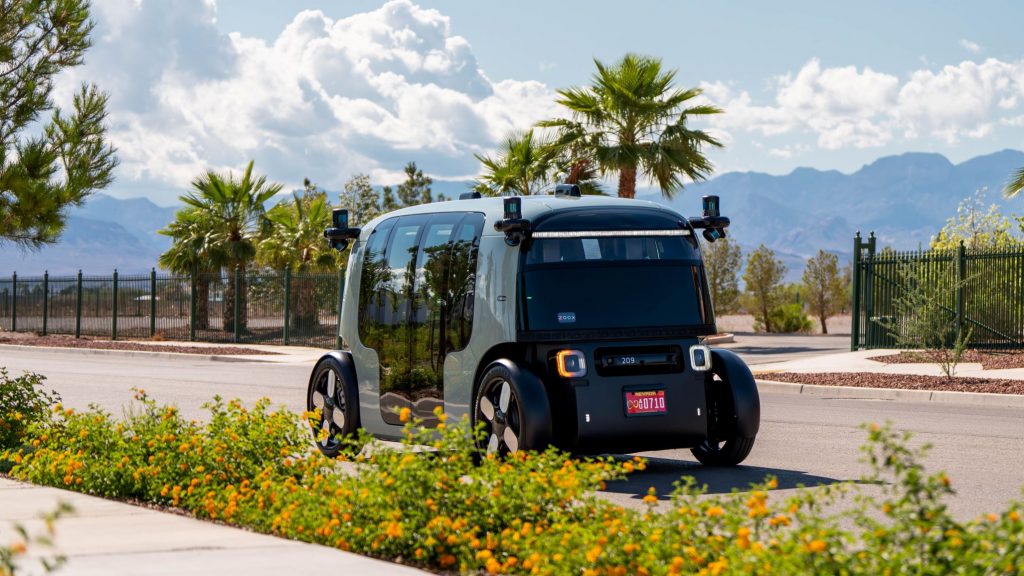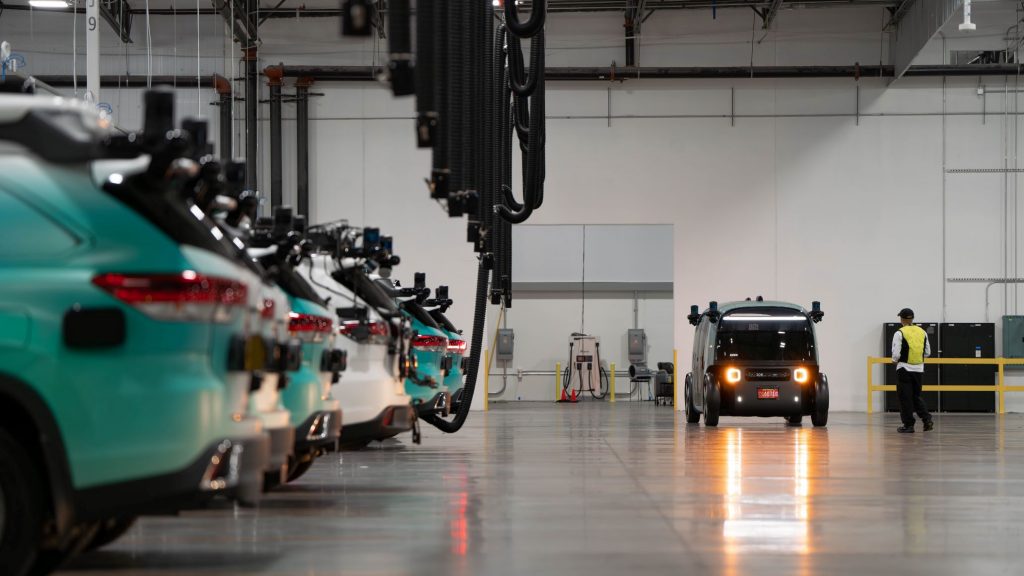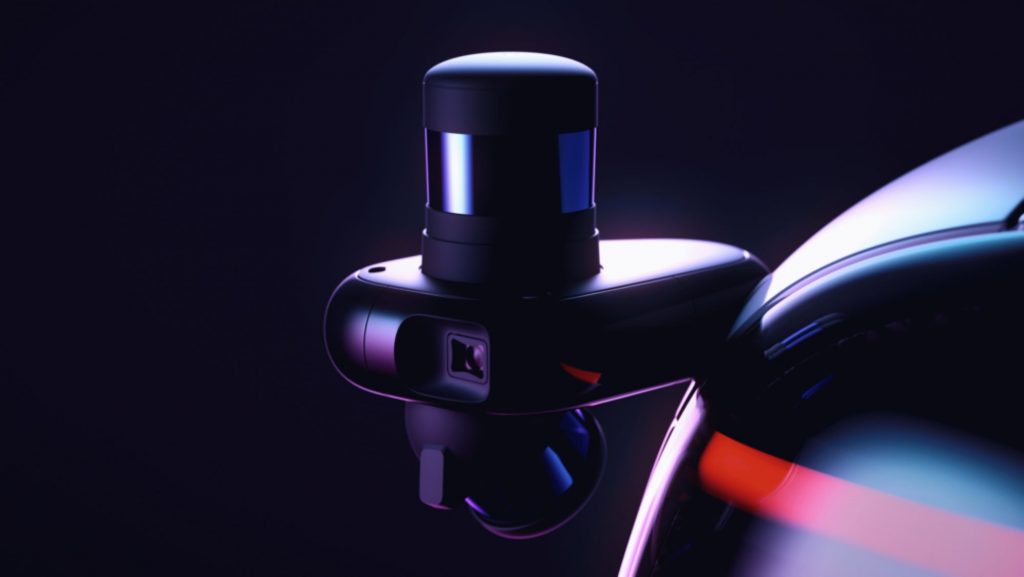
Zoox revealed today that it has deployed with passengers in Nevada, which the company says is the first time a fully driverless purpose-built robotaxi has operated autonomously on public roads in the state. Since June 16, the robotaxi that operates without a steering wheel and pedals has been autonomously carrying company employees in Las Vegas. This marks another big step toward commercial launch following the first public road deployment of the robotaxi in Foster City, CA, in February. (See our coverage here.)
“Deploying our robotaxi on open public roads in California and now Nevada is a big step for Zoox,” said Jesse Levinson, Co-Founder and CTO. “Driving autonomously in these two unique but equally challenging locations will provide us with invaluable learnings as we fine-tune our technology in preparation for commercial launch.”
To achieve the latest milestone, the company completed testing and received authorization from the Nevada Department of Motor Vehicles to test drive autonomous robotaxis on public roads in the state. In support of this new effort, Zoox is investing in its Las Vegas facilities by adding more warehouse space to house its testing and robotaxi fleets and more office space. The company will also be hiring across its “mission readiness” team, which is responsible for managing charging, cleaning, start up, and shut down of its testing and robotaxi fleets.

The robotaxi will start operating on a 1-mi loop around its Las Vegas headquarters, navigating several unprotected turns and multi-way stops—on busy public roads with cyclists, pedestrians, and cars. The vehicles can transport up to four people at a time along the public route at speeds up to 35 mph. The employees will be test subjects to help Zoox build its future public service, with the current short-term aim being to provide Las Vegas customers with driverless rides.
To enable autonomous operation, the Zoox perception system provides a 360-degree field of view to “see” and “hear” equally in all directions.
“When it comes to perception, the goal is clear,” said RJ He, Director of Perception. “We seek the most accurate understanding of the world around the vehicle. We rely on redundant sensors to achieve a high degree of robustness.”

The Zoox autonomy system uses sensor pods with identical architecture on the vehicle’s four corners. Each pod contains camera, lidar, and radar sensors for “complementary” information, with two interesting additions of longwave infrared and microphone sensors.
Long-wave infrared thermal vision imaging cameras differentiate objects based on their temperature, which is good for detecting people and animals, especially useful at night and in adverse weather conditions. The microphones are used to detect sounds such as sirens from emergency vehicles and discern their direction of arrival.
“Our perception algorithms and machine learning models leverage the strengths of each sensor modality to build a robust understanding of the world around our vehicle,” said He.
The perception output is then used by other components of the AI stack, namely for prediction and planning. Prediction forecasts potential behavioral outcomes by other “agents” like cars, pedestrians, and cyclists that have already been identified and classified by perception. The planner determines the best route for the vehicle to take.

